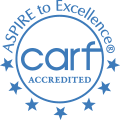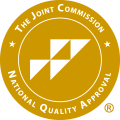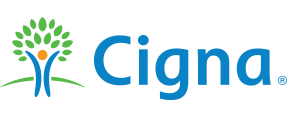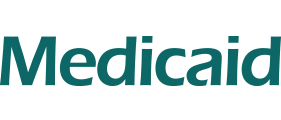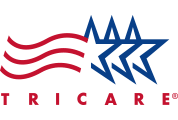One of the most difficult aspects about oxycontin addiction treatment is knowing when you need help. By understanding how oxycontin works and how treatment can be effective, you or your loved one are one step closer to recovery. Addiction Recovery Choice works with a large network of addiction treatment centers across the country that offer expert treatment for oxycontin addiction.
OxyContin Addiction
OxyContin, a narcotic pain reliever, is powerfully addictive. The drug creates a dependence that is physiologically and psychologically very similar to heroin.
If you can’t stop using OxyContin, you likely need some professional help. The kind of help you need depends on your situation. Are you just dependent, or dependent and addicted to OxyContin?
Anyone who uses the medication regularly for more than a couple of weeks will develop a physical dependence on the drug — a change in the brain that leads to a need to continue taking the medication. Anyone with a physical dependence will endure withdrawal symptoms when trying to stop taking the medication.
People with just a dependency on the medication may need some assistance from a doctor in tapering down their dosage and dealing with withdrawal symptoms. This is strictly a medical issue. People who are only dependent on OxyContin are not addicted and do not need addiction treatment.
Anyone who abuses the medication regularly — taking the drug for non-medical reasons, taking more of the drug than recommended or taking it more often than recommended — will develop an addiction in addition to a physical dependency.
People with a dependency and an addiction to the medication will need help dealing with withdrawal symptoms, but they will also need help dealing with cravings to use the drug and avoiding relapse. People addicted to OxyContin require addiction treatment.
OxyContin Addiction Treatment Options
If you are addicted to OxyContin, you have a number of addiction treatment options.
- You can go cold turkey
- You can undergo a rapid medical detox and then participate in addiction treatment on a residential or outpatient basis
- You can participate in an ultra rapid detox procedure
- You can take methadone
- You can take Suboxone
Quitting on your own (cold turkey) is often chosen as a first attempt, but is rarely successful. Even people who manage to endure the initial days of detox face a lengthy battle with drug cravings and pulls toward relapse.
Medical Detox and Continuing Treatment
This is the conventional “drug rehab” route. OxyContin addicts must overcome the physical dependency to achieve abstinence, and so the recovery process begins with a medically assisted detoxification.
During a medical detox, clients live in comfortable surroundings under 24-hour observation. Medications are prescribed to help reduce the discomfort of withdrawal and to ensure safety. Although opiate withdrawal symptoms are rarely dangerous, doctors are on call or on the premises at all times.
This initial withdrawal phase lasts for about a week. Upon completion, patients feel much better and are ready to progress to continuing addiction treatment.
Leaving treatment after detox almost guarantees relapse and a need to repeat the uncomfortable withdrawal period. Detox is not treatment; detox simply allows treatment to take place.
Post-detox treatment options vary greatly. Many people continue on in a residential setting, participating in addiction treatment programs in a drug rehab or hospital program. Some people prefer treatment on an outpatient basis. There is no right or wrong way, only one that matches your needs and circumstances.
Some elements of addiction treatment on an inpatient or outpatient basis include:
- Individual therapy
- Cognitive behavioral therapy
- 12 Step meetings
- Support group therapy
- Life skills, vocational and educational programming
- Family therapy
Treatment programs provide social and emotional support and teach people how to overcome surprisingly powerful and lasting cravings to use again.
Ultra Rapid Detox Programs
Ultra rapid detox program advertise a shortened withdrawal period and a much less uncomfortable detox.
These programs, which place an OxyContin addict under anesthesia while accelerating the withdrawal period, sound very attractive – but there are some drawbacks to a procedure that remains very controversial:
- Ultra rapid detox can be dangerous. Accelerating the withdrawal process can be tough on a body, and people have died while under anesthesia.
- A few days of ultra rapid detox can cost as much as a month or more of residential addiction treatment and far more than a comparable medically supervised detox.
- Very few ultra rapid detox practitioners offer any substantial addiction treatment or continuing care.
- Many people who undergo the procedure say that they still experience considerable withdrawal discomfort.
Ultra rapid detox programs are expensive, the withdrawal pains can still be very uncomfortable and you make an otherwise safe procedure (opiate detox) dangerous. No one should consider an ultra rapid detox without a careful weighing of the costs and benefits of the procedure.
Methadone
Methadone is a long-lasting opiate that replaces the short-acting opiate OxyContin in the brain. When you take methadone at therapeutic doses (one dose per day) you will not get high, feel withdrawal symptoms or experience drug cravings.
By going to a methadone clinic once daily for a dose of medication, you can immediately stabilize a life rocked by addiction. Without cravings or withdrawal, you take back control of your family life, your career or your academic performance. Once you regain physical and mental strength and stability, you can start to wean yourself off the medication.
Methadone is quite affordable and most people tolerate it well. Unfortunately, there are some disadvantages to methadone maintenance treatment:
- Because methadone can be abused, you will need to go to a clinic each day to take your dose.
- Methadone is an opiate and is addictive. When you decide to stop taking it, you will experience withdrawal symptoms. Methadone withdrawal symptoms are very tough.
Suboxone
A more recent alternative to methadone, Suboxone also works as an opiate substitution medication. When you take Suboxone, you feel no drug cravings, experience no withdrawal and you don’t get high.
Suboxone works very similarly to methadone, but there are some significant differences between the two medications:
- You can administer Suboxone at home in month-long doses (you do not need to go to a clinic every day to take your medication).
- The eventual withdrawal symptoms when tapering off Suboxone are much less severe than with methadone.
At first glance, Suboxone seems to be a clearly superior choice to methadone. For many people it is, but some people will have better luck with methadone:
- Suboxone is only a partial opiate agonist and so it provides only limited results. People with very heavy opiate addictions sometimes find that Suboxone doesn’t take away all of their withdrawal symptoms.
- Suboxone is more expensive that methadone.
- It may be harder to find a doctor capable of prescribing Suboxone than a clinic that can issue methadone.
Making A Choice
As with all forms of addiction treatment, there are few right answers, only treatment options that best meet the needs of individual clients. Any step into treatment and away from addiction is a very positive step in the right direction.
